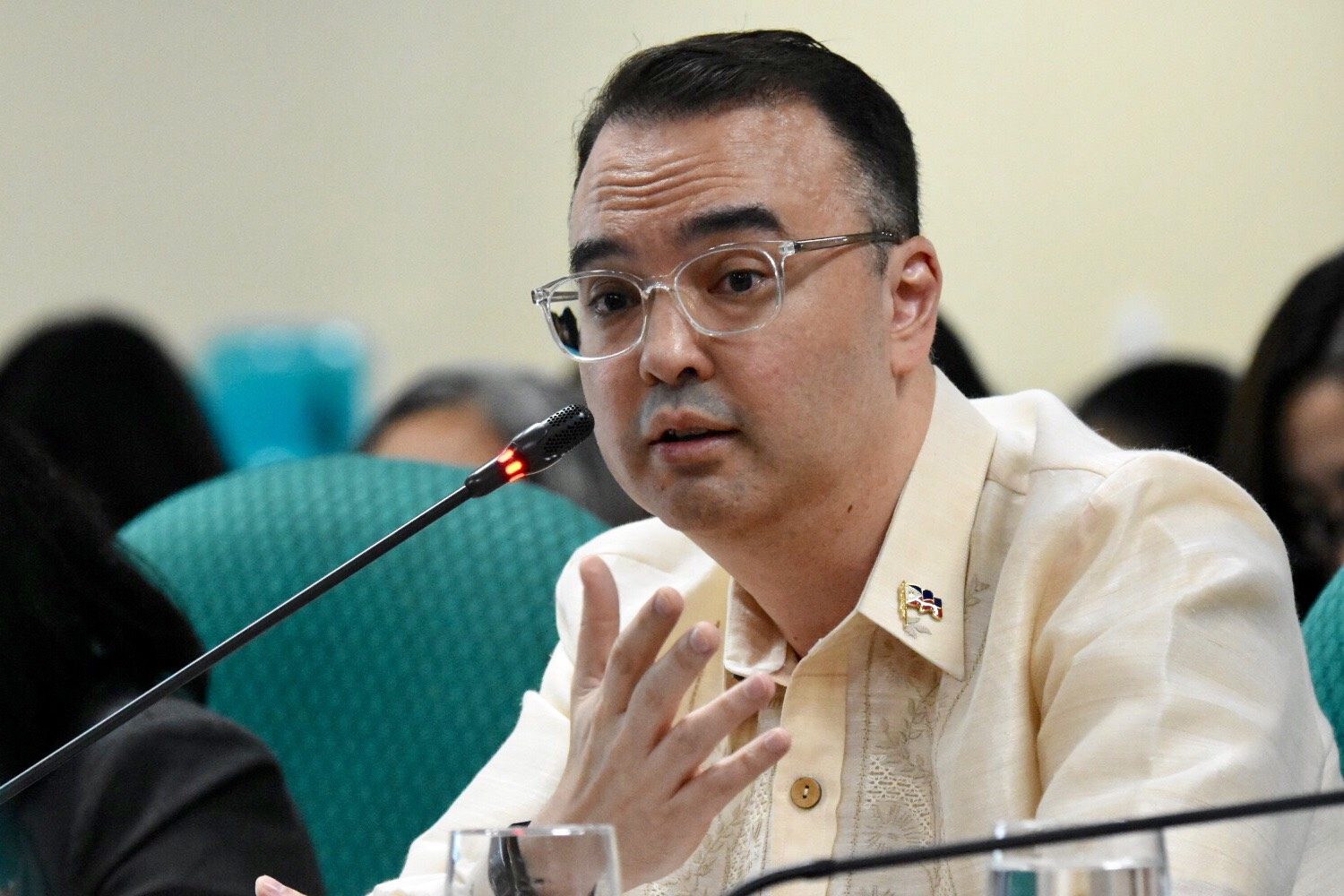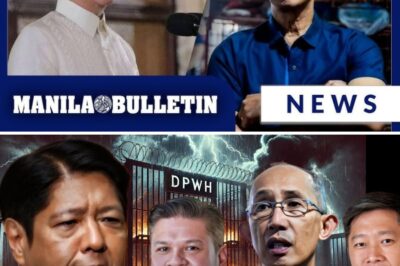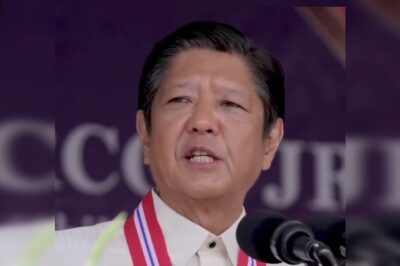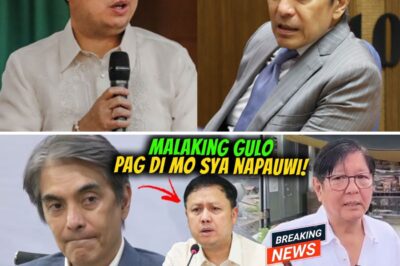
The halls of the Philippine legislature were recently rocked by a double-barreled broadside of revelations, exposing not only the staggering scale of embedded financial corruption but also the insidious psychological strategy being deployed to keep the masterminds forever beyond the reach of justice. In a series of hearings that spanned from the paralyzing inefficiency of the Bureau of Customs (BOC) to the alleged, systematic theft within the Department of Public Works and Highways (DPWH), legislators unveiled a terrifying portrait of a system seemingly designed to fail, one where corruption is not a flaw, but a “built-in” feature, costing the nation billions in lost revenue and potential kickbacks. This is not the standard, one-off scandal; it is the calculated anatomy of institutional decay, laid bare for a weary public.
The first major bombshell focused on the BOC, an agency that has long been synonymous with financial leakage and illicit transactions. During a Senate hearing, the long-whispered truth became a centerpiece of discussion: the root cause of the BOC’s enduring corruption is its tragic inability to modernize. Senator Win Gatchalian directly confronted the newly appointed Customs Commissioner with an international observation—a formal report from the US State Department citing the Philippine Customs as an agency with significant corruption challenges that requires urgent and radical reform. This was not merely local gossip; it was an official external validation of a national crisis, based on the complaints of American investors operating within the country. The pressure to clean house was palpable, yet the Commissioner’s response revealed a deep, almost insurmountable structural roadblock.
The solution to the BOC’s systemic corruption is, ironically, deceptively simple: complete digitalization. The proposed reform involves moving every process—from document submission to payment—online, aiming for “zero human intervention.” The Commissioner used the perfect analogy: the new system should function like an ATM, where a client can complete a transaction quickly and cleanly, without the need for a teller, thus eliminating the opportunity for illicit activities. This is not speculative technology; it is a proven model already in use in clean, highly efficient nations like Singapore, whose customs facility, as Senator Gatchalian noted from his own visit, operates almost entirely without a visible human presence. This model is the undisputed pathway to integrity, yet the subsequent revelation was nothing short of devastating.
The digitalization dream has been held hostage for nearly a decade. Since 2015, the BOC’s modernization efforts have been stalled due to a single, debilitating legal entanglement. A company that won the initial computerization bidding in 2015 had its contract canceled, leading to a lawsuit that has dragged on for ten brutal years. Because of this pending legal issue, the BOC has been effectively paralyzed; any new digitalization project could potentially be challenged or invalidated. For an entire decade, the Philippines has lost billions in potential revenue and suffered immeasurable economic damage because a single, protracted legal battle was allowed to persist, preventing a desperately needed technological upgrade. To compound the disaster, the Commissioner admitted that the very technology offered by the winning bidder in 2015 is now functionally obsolete. The nation has wasted ten years and is now facing the need for an entirely new solution, one that officials are now pushing for through a Public-Private Partnership (PPP) model, hoping to finally bypass the legal black hole that paralyzed the agency for a generation. The BOC scandal is a brutal, financial parable of institutional paralysis, a decade-long crisis engineered by legal red tape that has allowed billions to bleed out of the national treasury.
However, the BOC’s paralysis is only half of the systemic corruption picture. Just as the nation absorbed the shock of the decade-long stall at Customs, a different legislator exposed a form of corruption that is not paralyzed, but frighteningly active and allegedly “built-in” to the very structure of the nation’s infrastructure spending. Congressman Leandro Leviste, fresh from the floor of Congress, delivered a chilling warning about the 2026 budget for the Department of Public Works and Highways (DPWH), alleging that a staggering PHP 150 BILLION in kickbacks is already hidden within the appropriations for various projects. Leviste contended that this massive financial leakage is not a matter of choice; it is allegedly an inherent part of the agency’s system. He argued that even if an individual legislator refused to accept a portion of the illicit funds, the cost of the projects is intentionally inflated from the very beginning, ensuring the “excess fat” inevitably finds its way into the pockets of the officials within the DPWH system. The kickback, in this frightening scenario, is not optional—it is allegedly a mandatory component of the cost structure.
To combat this built-in theft, the Congressman proposed a radical, surgical solution: a flat 25% price cut on all DPWH project costs. This audacious move, if implemented, would directly excise the alleged P150 billion in “fat” that fuels the system of corruption. He then proposed reallocating the resulting savings to underfunded regions, specifically noting the egregious imbalance suffered by Region 4A (CALABARZON), which accounts for 50% of the nation’s population and economy yet receives only about 10% of the DPWH budget. Leviste’s proposal is more than fiscal policy; it is political dynamite, a direct challenge to the powerful interests that allegedly profit from the over-inflated cost of public infrastructure. The DPWH revelations expose a system actively designed to generate massive, systemic theft, providing a terrifying counterpoint to the passive failure observed at Customs.

The logical question hanging over both these colossal scandals is why, despite continuous Senate and Congressional hearings, do these systemic problems never truly cease, and why are the true architects of this corruption rarely held accountable? The answer came from Senate Minority Leader Alan Peter Cayetano, who unveiled a sophisticated and chilling theory: the entire investigation process is being manipulated by the masterminds themselves in what he termed “The Yoyo Game.”
Cayetano warned that the ongoing multi-billion-peso flood control scandal investigation is rapidly devolving into a protracted, dramatic spectacle—a play where only the “small characters,” the project engineers, district officials, and rival legislators, are paraded onto the stage, while the true ringleaders remain comfortably in the shadows. His argument is simple yet deeply unsettling: a powerful, well-funded force is actively working to derail the process. The masterminds’ alleged plan is to allow those at the lower and middle tiers to engage in a “mud-slinging circus,” throwing blame at each other—congressmen against senators, local officials against central agency figures—until the entire picture becomes so murky, so saturated with conflicting accusations, that the public can no longer discern the truth.
This is a strategy of emotional and intellectual manipulation. The masterminds, Cayetano contended, are backed by the billions they have allegedly stolen, giving them the financial capability to pay off witnesses, destroy evidence, and spin narratives in the media. The “Yoyo Game” is designed to exhaust the public. The cycle of endless, high-drama hearings with no concrete resolution—the investigative “yoyo”—is intended to fuel public frustration until the people themselves simply tire of watching. Once the public loses interest and moves on, the issue will slowly die, and when the next election cycle arrives, the flood control scandal will be old news. The masterminds will have, once again, walked free.
To counter this insidious psychological warfare, Senator Cayetano offered a concrete, multi-stage strategy. First, he urged the Senate Blue Ribbon Committee to immediately complete a clear, comprehensive list of all new flood control projects from 2024 and 2025 while the evidence is still fresh. Second, once the list is compiled, the Committee must methodically summon and question everyone involved, from the lowest project engineer up to the highest-ranking officials, rigorously following the chain of command and the flow of money until it leads directly to the very top. This radical shift in focus from a confusing mud-slinging circus to a clear, forensic tracking of the illicit money is the only way to break the debilitating cycle of the “Yoyo Game.” The revelations expose a nation facing two fundamental problems: a systemic paralysis at Customs and a built-in theft mechanism at the DPWH. But most terrifyingly, the masterminds have the capacity to manipulate the very process of seeking a cure, leveraging public fatigue as their ultimate shield. The solutions are clear—digitalization, a 25% price reduction, and a smarter, more targeted investigation strategy—but the question now is not what the problem is, but who among the nation’s leaders has the political courage to shatter a system that has enriched the few while impoverishing the many. The clock is ticking, and the masterminds are watching, waiting for the public to simply give up.
News
The Three-Year Concealment: Did a Major City Mayor Allegedly Know the Names of the Powerful Figures Behind the P36 BILLION Road Corruption Scandal But Choose Silence to Protect Political Allies?
The Anatomy of a Betrayal: Exposing the P36 Billion Corruption and the Scandal of Silence The political establishment has…
The Quarter-Trillion Dollar Question: Did Switzerland’s Shocking P310 Billion Investment Into the Philippines Under President Marcos Jr. Finally Confirm the Start of the Legendary ‘Marcos Gold’ Withdrawal?
The Great Swiss Enigma: Is P310 Billion the Dawn of the Marcos Gold’s Return? The global financial community and…
The ‘Finish Line’ for Financial Malfeasance: Did President Marcos’s Shocking, Unprecedented Move to Live-Stream the Entire Multi-Billion-Peso Budget Process Just Guarantee That Corrupt Officials Can No Longer Escape Justice?
The Final Curtain: Why Total Transparency is The Weapon That Ended ‘Back Door Deals’ for Good The political landscape…
Political Tensions Soar: Did Congressman Toby Tiangco Break Ranks to Issue a Chilling Warning of ‘Public Revolt’ If Accused Corruption Figure Zaldy Co Is Not Immediately Forced Home?
The ongoing investigation into one of the nation’s largest-ever corruption scandals, involving billions in mismanaged flood control funds, has reached…
The Quiet Power: Why a Top US Official Called the Philippines ‘Asia’s Secret Weapon’ and Declared America Can’t Win a War Alone
In a move that has sent tremors through the usually placid waters of international diplomacy and defense planning, a senior…
SHOCKWAVE: Filipino VP’s Secret $2 Million Fund Justification Ignites National Firestorm—The ‘Corruption Probe’ That Took A Year To Reveal
The Philippines is currently experiencing a political eruption after Vice President Sara Duterte, who also previously served as the Secretary…
End of content
No more pages to load












